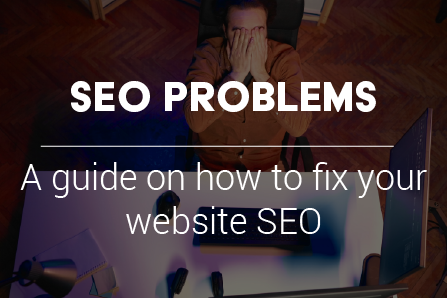
In today's digital landscape, search engine optimization (SEO) is crucial for driving organic traffic to your website. However, many businesses struggle with hidden SEO issues that prevent them from ranking well in search results. In this guide, we’ll explore how to find and fix SEO problems using manual methods and automated tools.
Why SEO Audits Matter
An SEO audit helps you assess your website's health, ensuring that it meets search engine guidelines. Regular audits can uncover technical glitches, content gaps, and other issues that may be hurting your site's rankings. By fixing these problems, you improve your chances of appearing higher in search results, driving more traffic, and increasing conversions.
Common SEO Issues and How to Find Them
1. Indexing and Crawling Issues
If search engines can’t find or properly index your pages, they won’t show up in search results. Here’s how to identify these issues:
-
Use Google Search Console: Check the “Coverage” report to see which pages are indexed and which have errors.
-
Perform a Site Search: Type site:yourwebsite.com into Google. If your pages aren’t showing up, they may not be indexed.
-
Check Robots.txt & Meta Tags: Ensure your robots.txt file and noindex meta tags aren’t blocking important pages.
2. Page Speed and Performance
A slow-loading website negatively impacts user experience and search rankings. Tools like Google PageSpeed Insights can help by analyzing:
-
Server Response Time: Slow servers increase load times.
-
Image Optimization: Large images slow down a site. Compress them using tools like TinyPNG.
-
Caching & Minification: Reduce file sizes and enable caching to speed up performance.
3. Mobile Usability Issues
With Google’s mobile-first indexing, your site must be mobile-friendly. Use these checks:
-
Google Mobile-Friendly Test: Analyze how well your site performs on mobile devices.
-
Responsive Design: Ensure your website adjusts to different screen sizes.
-
Touch Elements: Buttons and links should be easily clickable on mobile.
4. Broken Links and Redirects
Broken links can harm your site's credibility and user experience. Here’s how to find and fix them:
-
Use Screaming Frog SEO Spider: This tool crawls your site and detects broken links.
-
Google Search Console: The “Crawl Errors” section flags 404 errors.
-
Redirect Management: Use 301 redirects for moved content instead of 302 (temporary) redirects.
5. On-Page SEO Issues
Optimizing on-page elements ensures search engines understand your content. Key areas to check:
-
Title Tags & Meta Descriptions: Ensure they are unique, relevant, and within the character limit.
-
Header Tags (H1, H2, H3): Use headers to structure content effectively.
-
Keyword Optimization: Avoid keyword stuffing; instead, use natural keyword placement.
6. Duplicate Content Issues
Search engines penalize duplicate content because it creates confusion. To find duplicate content:
-
Use Copyscape: Detect duplicate content across the web.
-
Check Canonical Tags: Use canonical tags (rel=canonical) to specify the preferred version of a page.
7. Backlink Profile & Authority
A strong backlink profile improves your website’s credibility. To analyze your backlinks:
-
Ahrefs or Moz: These tools provide insights into your backlinks and domain authority.
-
Disavow Toxic Links: Remove low-quality or spammy backlinks that may harm your rankings.
Best SEO Tools for Auditing Your Website
To automate your SEO audit, consider these tools:
-
Google Search Console (Free) – Monitors indexing issues and search performance.
-
Google PageSpeed Insights (Free) – Analyzes site speed and provides optimization tips.
-
Screaming Frog SEO Spider (Free for up to 500 URLs) – Detects technical SEO issues.
-
Ahrefs, SEMrush, Moz (Paid) – Offer comprehensive SEO analysis, keyword tracking, and backlink monitoring.
Conclusion
Performing regular SEO audits ensures your website remains optimized for search engines and user experience. By addressing technical issues, improving content quality, and monitoring backlinks, you can improve your rankings and attract more organic traffic. Start your SEO audit today and unlock your website’s full potential!
